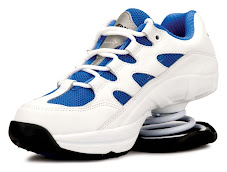 Although the width, length, and size of your shoes are important, many people forget that lacing techniques are equally of value to ensure a proper fit. Many lacing techniques can be used to prevent injuries and to relieve foot problems and pain. Individuals with specific foot issues should follow lacing techniques specific to their foot characteristics to get a good shoe fit.
Although the width, length, and size of your shoes are important, many people forget that lacing techniques are equally of value to ensure a proper fit. Many lacing techniques can be used to prevent injuries and to relieve foot problems and pain. Individuals with specific foot issues should follow lacing techniques specific to their foot characteristics to get a good shoe fit.General Lacing Techniques:
Follow these general techniques from The American Orthopaedic Foot and Ankle Society:
- Loosen the laces as you slip into your shoes because this prevents unnecessary stress on the eyelets and the back of your shoes.
- Begin lacing your shoes closest to your toes, and pull the sets of eyelets, one at a time to adjust laces for a perfect fit.
- Shoes with a large number of eyelets make it easier to adjust laces for a custom fit.
Specific Tips for Shoe Types:
- Narrow feet: Start with the eyelets farthest from the tongue of the shoes and bring it up the side of the shoe.
- Wide feet: Use the eyelets closest to the tongue of the shoe because this provides for more space.
- Heel problems: By using every eyelet, make sure that the area closest to the heel is tied very tightly, while less tension is held near the toes. When you have reached the second to last eyelet on each side, start threading the lace through the top eyelet, making a small loop. Then, thread the opposite lace through each loop before tying it.
- Narrow heel and wide forefoot: Use two laces and thread through the top half of the eyelets and the other lace through the bottom half. The laces closest to the heel should be secured more tightly than the lace closest to the toes.




